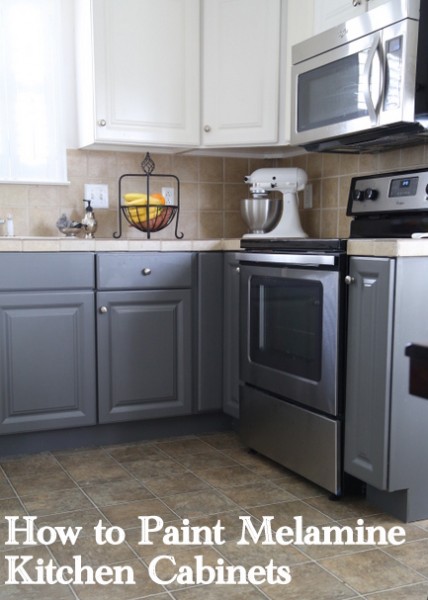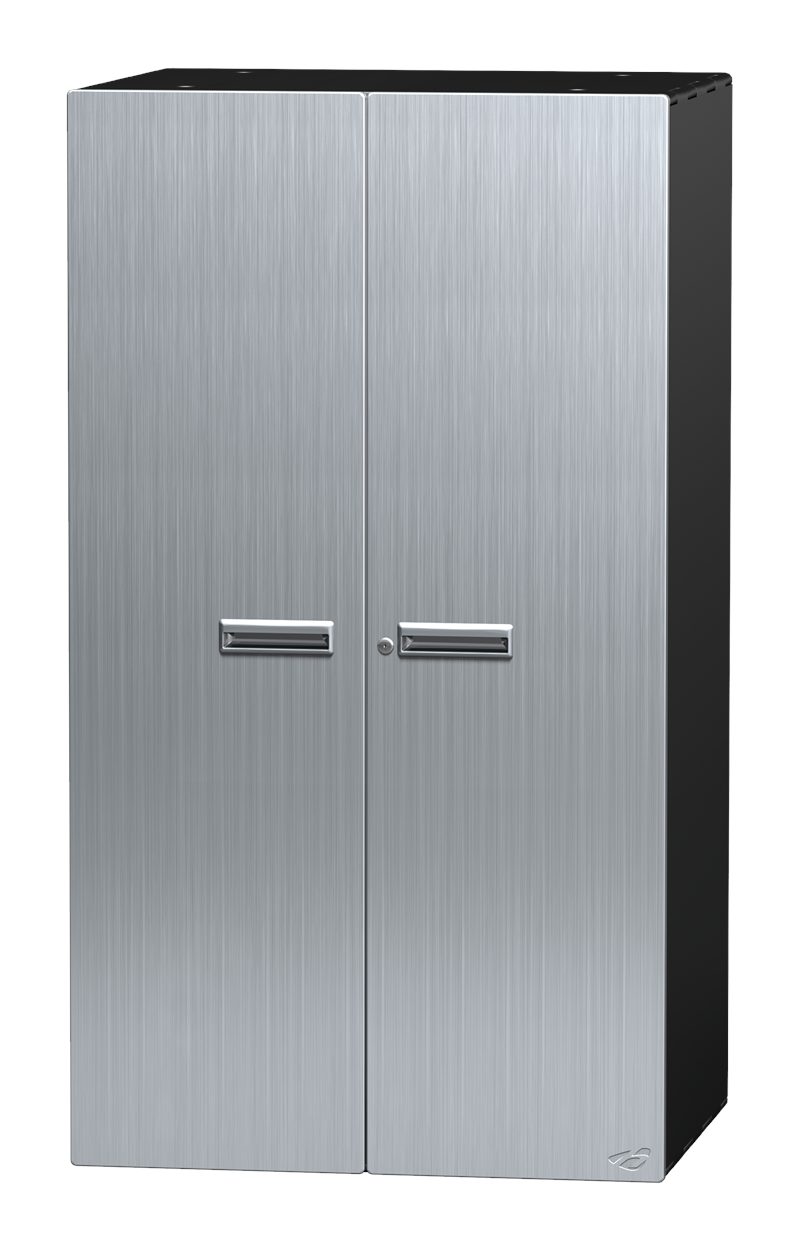Plastic-coated kitchen cabinets have become a popular choice among homeowners and interior designers due to their durability, cost-effectiveness, and aesthetic appeal. This post explores the various aspects of plastic-coated cabinets, from their manufacturing process to their maintenance, benefits, and drawbacks, ensuring you have all the information needed to make an informed decision.

The Manufacturing Process
Material Selection and Preparation
Plastic coated kitchen cabinets typically start with a base material, often medium-density fiberboard (MDF) or plywood. These materials are chosen for their stability and ability to provide a smooth surface for the plastic coating. MDF, in particular, is favored for its consistency and uniformity, which are crucial for achieving a high-quality finish.
Application of the Plastic Coating
The plastic coating, usually a type of thermoplastic such as PVC (polyvinyl chloride) or melamine, is applied to the base material through a process called thermoforming. In this process, the plastic is heated to a pliable state and then pressed onto the cabinet surfaces using a combination of heat and pressure. This ensures a seamless and durable bond between the plastic and the base material.
Quality Control
After the coating is applied, the cabinets undergo rigorous quality control checks. These checks include testing for adhesion, surface smoothness, and resistance to heat, moisture, and impact. Quality control ensures that only the best products make it to market, guaranteeing durability and longevity.
Customization Options
Plastic coated cabinets can be customized in various ways. Homeowners can choose from a wide range of colors, finishes (glossy, matte, or textured), and even patterns that mimic natural materials like wood or stone. This versatility allows for a high degree of personalization to match any kitchen design.
Environmental Considerations
Modern manufacturing processes are increasingly focused on sustainability. Many manufacturers use eco-friendly plastics and recycling methods to reduce environmental impact. Additionally, advancements in technology have led to more energy-efficient production methods, further contributing to the environmental sustainability of plastic coated cabinets.

Benefits of Plastic Coated Kitchen Cabinets
Durability and Longevity
One of the most significant advantages of plastic coated kitchen cabinets is their durability. The plastic coating provides a robust barrier that protects the underlying material from moisture, heat, and physical damage. This makes them particularly suitable for the high-traffic and often harsh environment of a kitchen.
Easy Maintenance
Plastic coated cabinets are incredibly easy to maintain. Their smooth, non-porous surfaces are resistant to stains and can be cleaned with minimal effort using common household cleaning agents. This ease of maintenance ensures that the cabinets retain their appearance and functionality over time.
Cost-Effectiveness
Compared to other high-end cabinet options like solid wood or metal, plastic coated cabinets are relatively affordable. They offer an excellent balance between cost and performance, making them an attractive option for budget-conscious homeowners looking to upgrade their kitchens without compromising on quality.
Aesthetic Versatility
The range of colors, finishes, and textures available for plastic coated cabinets is extensive. Whether you prefer a sleek, modern look with high-gloss finishes or a more traditional aesthetic with wood-grain patterns, there’s an option to suit your taste. This versatility allows for cohesive and customized kitchen designs.
Resistance to Environmental Factors
Plastic coated cabinets are highly resistant to environmental factors such as humidity and temperature fluctuations, which are common in kitchens. This resistance helps prevent warping, swelling, or other forms of damage that can affect cabinets made from less resilient materials.

Drawbacks of Plastic Coated Kitchen Cabinets
Susceptibility to Scratches and Dents
While plastic coated cabinets are durable, they are not immune to damage. Sharp objects or heavy impacts can cause scratches or dents in the surface. Once damaged, the repair process can be more complex compared to other materials, often requiring professional intervention.
Potential for Discoloration
Over time, exposure to direct sunlight can cause the plastic coating to fade or discolor. This is especially true for darker or more vibrant colors. To mitigate this, it’s advisable to use UV-protective treatments or ensure the cabinets are not placed in direct sunlight for extended periods.
Limited Repair Options
In the event of significant damage, repairing plastic coated cabinets can be challenging. Unlike solid wood cabinets, which can be sanded and refinished, plastic coatings do not lend themselves to easy repair. Often, the best solution is to replace the affected doors or panels entirely.
Environmental Concerns
While many manufacturers are making strides towards sustainability, plastic coatings are still derived from petrochemicals. This raises concerns about the environmental impact of their production and disposal. Additionally, off-gassing from some types of plastic coatings can contribute to indoor air pollution, though this is less of a concern with modern, high-quality products.
Perception of Quality
Despite their many benefits, plastic coated cabinets are sometimes perceived as lower quality compared to natural materials like wood or stone. This perception can affect resale value and might not appeal to homeowners who prioritize natural, organic materials in their home design.

Maintenance Tips
Regular Cleaning
To keep plastic coated cabinets looking their best, regular cleaning is essential. Use a soft cloth or sponge with a mild detergent to wipe down the surfaces. Avoid abrasive cleaners or scrubbers, as these can scratch the plastic coating. A gentle, circular motion will help remove any buildup without damaging the finish.
Addressing Stains Promptly
If spills occur, it’s important to clean them up promptly to prevent staining. Although the plastic coating is resistant to many substances, certain foods and liquids can still cause discoloration if left for extended periods. A mixture of baking soda and water can be used for tougher stains.
Avoiding Excessive Heat
While plastic coated cabinets are designed to withstand the typical heat of a kitchen, they should not be exposed to excessive heat sources, such as direct contact with hot pans or prolonged exposure to high heat appliances. Using heat-resistant pads or trivets can help protect the surfaces.
Preventing Scratches and Dents
To minimize the risk of scratches and dents, avoid using sharp objects near the cabinets and be cautious when moving heavy items. Adding felt pads to the bottom of small appliances and utensils can also help prevent accidental damage. Regularly check and replace these pads as needed.
Periodic Inspections
Regularly inspect your cabinets for any signs of damage or wear. Early detection of issues such as peeling edges or loose hardware can prevent more significant problems down the line. If you notice any damage, address it promptly to maintain the integrity and appearance of your cabinets.

Choosing the Right Style
Matching with Kitchen Design
When selecting plastic coated cabinets, consider how they will integrate with your overall kitchen design. Look at the color scheme, appliance finishes, and existing decor. Neutral colors like white, grey, or beige offer versatility, while bold colors can make a statement and create a focal point.
Selecting the Finish
The finish of the plastic coating plays a significant role in the overall aesthetic. Glossy finishes can make a space feel larger and more modern, reflecting light and adding a sleek touch. Matte finishes, on the other hand, offer a more understated, elegant look that hides fingerprints and smudges better.
Exploring Textures
Textured finishes can add depth and interest to your kitchen cabinets. Options like wood grain, stone, or metallic textures can mimic natural materials while providing the benefits of plastic coatings. These finishes can create a unique look that stands out from standard smooth surfaces.
Considering Hardware
The choice of hardware, such as handles and knobs, can significantly impact the look of plastic coated cabinets. Modern, minimalist hardware can enhance a contemporary design, while more ornate options can complement traditional or transitional styles. Ensure that the hardware matches both the style and functionality needs of your kitchen.
Evaluating Trends
While personal preference is paramount, it’s also worth considering current trends in kitchen design. Trends such as two-tone cabinets, integrated handles, and mixed materials can inspire and help create a kitchen that feels both modern and timeless. Keeping an eye on design trends can also ensure your kitchen remains appealing for years to come.

Common Mistakes to Avoid
Choosing Based on Price Alone
One of the most common mistakes when selecting plastic coated kitchen cabinets is choosing based on price alone. While budget is an important consideration, focusing solely on the lowest price can lead to poor quality and less durability. It’s essential to balance cost with quality and functionality to ensure a worthwhile investment.
Ignoring Maintenance Requirements
Another mistake is ignoring the maintenance requirements of plastic coated cabinets. While they are generally low-maintenance, they still require regular cleaning and care to maintain their appearance. Neglecting maintenance can lead to premature wear and tear, reducing the lifespan of your cabinets.
Mismatching Styles
Selecting cabinets that don’t match the overall style of your kitchen can create a disjointed and unappealing look. It’s important to consider the design elements of your kitchen, including color schemes, finishes, and hardware, to ensure a cohesive and harmonious appearance.
Overlooking Professional Installation
DIY installation might seem like a cost-saving measure, but improper installation can lead to issues such as misaligned doors, gaps, and instability. Hiring a professional ensures that the cabinets are installed correctly, providing long-term durability and a polished finish.
Disregarding Environmental Impact
Ignoring the environmental impact of plastic coated cabinets is another common mistake. While plastic coatings have many benefits, they are made from petrochemicals and can have environmental repercussions. Choosing eco-friendly options and manufacturers committed to sustainability can help mitigate this impact.

What are plastic coated kitchen cabinets made of?
Plastic coated kitchen cabinets typically consist of a base material like MDF or plywood, which is covered with a layer of plastic such as PVC or melamine. The plastic coating is applied through a process called thermoforming, where the plastic is heated and pressed onto the surface, creating a seamless and durable finish.
How do I maintain plastic coated kitchen cabinets?
Maintaining plastic coated kitchen cabinets involves regular cleaning with a mild detergent and a soft cloth or sponge. It’s important to avoid abrasive cleaners and excessive heat. Promptly addressing spills and stains, preventing scratches and dents, and conducting periodic inspections can help keep your cabinets looking new.
Are plastic coated cabinets eco-friendly?
While plastic coated cabinets offer durability and ease of maintenance, their environmental impact can be a concern due to the petrochemicals used in the plastic coating. However, many manufacturers are adopting more sustainable practices, such as using eco-friendly plastics and recycling methods, to reduce this impact.
Can plastic coated cabinets be repaired if damaged?
Repairing plastic coated cabinets can be challenging, especially if the damage is significant. Small scratches and dents may be fixed with specialized kits, but more extensive damage often requires replacing the affected panels or doors. Professional assistance is recommended for best results.
What styles and finishes are available for plastic coated cabinets?
Plastic coated cabinets come in a wide range of styles, colors, and finishes. You can choose from glossy, matte, or textured finishes, and a variety of colors from neutral tones to bold hues. Additionally, some finishes can mimic natural materials like wood or stone, allowing for a high degree of customization to match your kitchen design.
Solid Plastic Kitchen Cabinets : ISHOWTIENDA 2016 Solid Hanging Kitchen Cabinet Cupboard Door

54″ Lower Storage Cabinet

How to Repair and Paint Plastic Coated Melamine Cabinets Today’s Homeowner

Plastic Kitchen Cabinets : Cabinets Plastic Kitchen Miniature DollHouse Furniture – To

Related Posts: